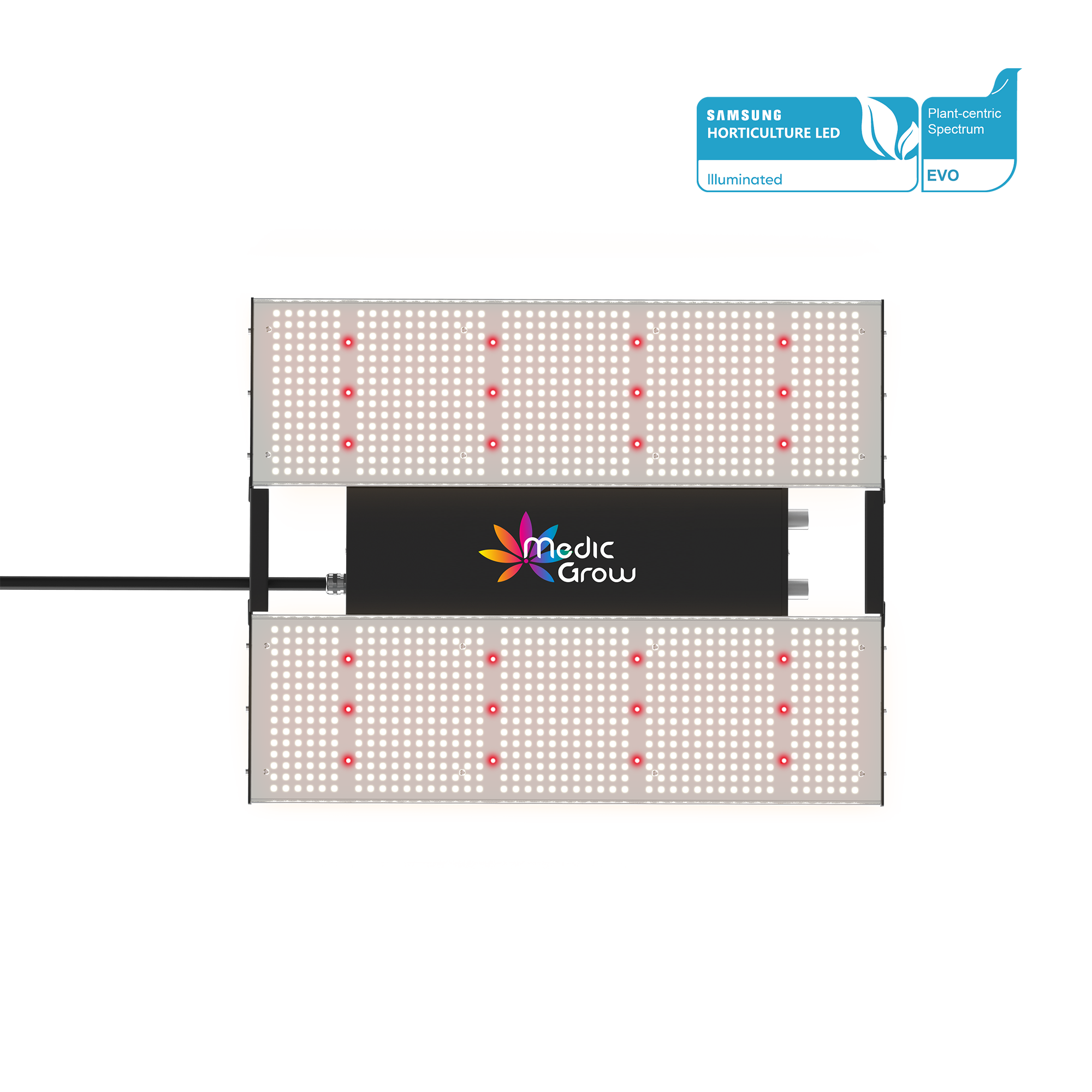
Should Growers Move Outdoor Plants Inside For Winter?
One question asked by most growers as winter approaches is whether or not they should move outdoor plants inside. This is due to worries that outdoor plants might get scathed as a result of the cold.
However, there's good news – you do not need to worry about ending your outdoor plants; there is a way to help bring them unharmed to a new season.
At the end of this article, growers will find answers to this agelong question and know exactly what to do when it starts to get cold.
- Part 1: Tips on how to move outdoor plants inside
- Part 2: Tools and supplies you will need to move outdoor plants inside
- Part 3: Things to keep in mind
- Part 4: The Big Question
Tips on how to move outdoor plants inside
Before you decide to move your outdoor plants inside, here are a couple of things you should be aware of regarding how to have a successful transfer of your outdoor plants:
Wash your plants properly
One of the biggest dilemmas of taking outdoor plants inside is having pests multiply at an exponential rate indoors.
You don't want a pest infestation in your home during winter, do you?
So, it's best to prevent this before you take that decision.
To do this, you need to thoroughly wash your plants with a quality spray of water – do this outdoors. Afterward, make sure to utilize an insecticidal soap for your plant and let it get dry.
Take your plants to a bright area
UV light for plants is an essential part of the growth and survival of your outdoor or indoor plants. So, never forget to factor in the place of bright light even as you move your plants indoors.
Look for a space at home which has adequate lighting during this period and set your potted plants there.
Another way you can provide lighting for your plants is by employing the use of artificial lighting such as LED grow lights – their advantage is endless, especially at this time.

Supply adequate humidity
It is crucial that once you bring your plants inside, you provide the needed warmth for their survival with full-spectrum light. The reason you brought them indoors is to save them from the cold in the first place.
So, you may want to get a house humidifier that will keep on blowing heat into the atmosphere of your home, thereby regulating the humidity of your plants.
Peradventure, you don't have a humidifier set up; you could mist the plants many times in a day whenever possible and then keep them in humidifier trays.
Humidifier trays are special trays containing pebbles into which you add water which eventually evaporates and keeps the plants humid.
Two surefire signs indicate that plants could need a bit more humidity. They include:
- Leaf drop
- Dry leaf tips
Supply water sparingly
In the winter months, it is best to avoid overwatering your plants. Never forget that most plants drink water less during this period of the year.
So, only water them when the top 1-2 inches of the soil has dried out; also, give moderate amounts of water when you water them.
Delay feeding your plants
Refrain from fertilizing your plants until about a month before planning to introduce them back outdoors.
Usually, this reintroduction period is around mid-March; there is also a unique way of feeding your indoor plants during this period. Feed your plants weekly using a half-strength liquid solution and an all-purpose organic fertilizer.
Transition out
Here is the final step of the way. Now, you have finally been able to nurture your plants until the cold season has elapsed.
To transition, you need to observe that the night temperatures have become stable above 45 degrees Fahrenheit and that frosting tendencies have passed.
Once you take your plants outdoors, ensure to water them properly, and in about one month, they’ll be growing rapidly.
Tools and supplies you will need to move outdoor plants inside
To move your outdoor plants inside grow tent kits, you will require skill and the right tools to be successful. Here are a couple of things you will need to have in your arsenal:
- Pruning shears
- Gardening gloves
- Drainage trays
- Clean washcloth
- Sticky stake
- New pots
- Magnifying glass
- Insecticidal soap, horticultural oil, or neem oil
Things to keep in mind
The first factor you should consider before moving your outdoor plants inside is to select the right plants. Far from what many believe, not all plants can survive indoors, especially in places with limited light, humidity, or warmth.
In your home, you may have a few spots where sunlight gets to, so you need to decide which plants you wish to keep indoors and which you don't.
Even though it is tempting to want to move all your outdoor plants indoors, it is rather unwise to do so. We've earlier heightened a couple of things to consider before making this decision; however, let's explore a guideline you need to follow to be successful.
Retain only healthy plants
You will not get to improve a plant that has had to struggle all through the summer now that it's cold. You need to come to terms with the fact that it’s time to let it go and keep only the ones that have and can thrive.
Don't bring in an infested plant
We started this earlier and how to control pests before allowing outdoor plants to live indoors.
The rate of the spread of pests and diseases indoors is exponential as compared to outdoor planting. Even if you choose to quarantine the plant after you’ve brought it in, it doesn’t mean you will successfully prevent the spread of the disease to neighboring plants.

One more thing, insect predators of these plants mainly dwell indoors; this could provoke an ugly case of infestation. So, do well to properly check the plants to ascertain if there are any issues before you bring outdoor plants inside.
Pay attention to your favorite plants
If space becomes an issue, prioritize the plants you love most, especially those you've invested lots of time and resources into.
For instance, if you have Ferns you've been tending for years or any other thing you've trained at a standard or those you simply love without any tangible reason.
The appeal of the plant
There is usually an upside to planting outdoor plants in pots, and that is, that some of these plants tend to beautify the environment, indoors or outdoors.
If you observe that any of the plants you have outdoors will look good indoors, proceed to move them inside.
Some homes cannot successfully grow certain flowering plants like begonias, geranium, passion flowers, and even fuchsia, which blossom indoors. These plants may not look as colorful or beautiful as they would have if planted outdoors, but they will surely beautify your home even in winter.
Prioritize some vegetables
You need to give special attention to a vegetable like tomato plants and small peppers. The nature of these plants affords them to produce fruits even in winter with adequate sunlight.

Also, note that certain vegetables may require having a large pot to be successful. Also, keep in mind that indoors, you don't have insects to pollinate these plants, so there needs to be manual pollination of these plants.
Alternatives to consider
One other thing to fully understand is if there are any alternatives to making outdoor plants live indoors. Never forget that certain plants may benefit from having a dormancy period during the winter months.
Properly plan for plants like rosemary and potted lavender in your basement and garage, which improves the Fengshui. These plants will remain dormant unless the temperatures go below 20 degrees Fahrenheit.
Ensure that the roots don't get overly wet or dry - do this by watering them when the soil is dry only by just a few inches below the surface. Never forget to ensure that excess water drains out.
As you move outdoor plants inside, also be realistic about the space available. Never forget that even if you don't take in all the potted plants, you can still take cuttings from the parent plants.
These cuttings take far less space within the home than the large parent plants, and as they take root during the winter, they'd be better prepared to face the external environment after the season.
At the initial phase of the transition from outdoors to indoor plants, it is crucial to help the plants acclimatize. You can achieve this by opening the room windows where you keep these plants, so the temperature outside and inside is even.
That way, it’s easier for them to adjust to the humidity and temperature change more readily rather than wasting away in the frost before bringing them into the heated home.
The Big Question
Now to the big question, “Should I move my outdoor plants inside?”
Certain factors influence the growth of plants, among which sunlight, temperature, and humidity are chief. If your plant is going to get negatively affected by the elements.
For instance, in cold seasons, it's best to move it indoors. But there isn’t a need to move plants indoors if this isn’t the case – in all, do what makes your plants thrive.
So, the answer greatly depends on the current state of things around your plants and the nature of the plant itself.
Conclusion
Choosing to move outdoor plants inside isn't much of a challenge, especially when you have in the back of your mind that the necessary conditions for survival must be met.
So, if you choose to bring it indoors, you need to provide artificial lighting such as 150W LED grow lights and adequate humidity. If you also choose to keep your plants growing outside, you need to ensure that your plant is safe.
Avoid things that kill indoor plants like pests by using pesticides and properly washing the plants before moving them. Also, do well to pay attention to plants that have unique features you wish to keep and those that have earned a top spot in your heart.
No law says you should keep all plants inside; look at the current state of the plants, check out the possibility of growing cuttings instead, and see how productive the plants could be in the season of low temperatures.
Since you know there's no need to panic, start preparing to move your plants indoors now.
Related Posts
Do Indoor Plants Need UV Light?
Learn About the Importance of Air Circulation for Indoor Plants
Featured Products
Blog Posts
Contact Us with Any Idea!
- Choosing a selection results in a full page refresh.
!
































